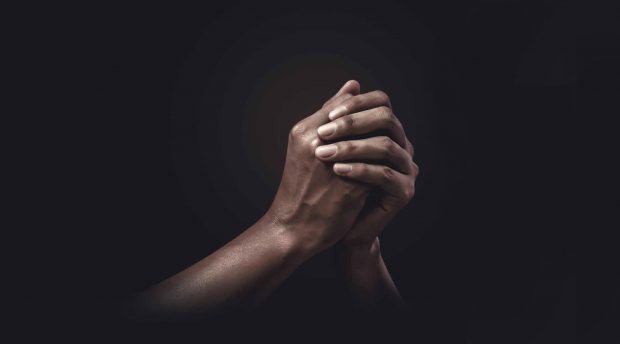 Lo, I will be with you always … even unto the end of a pandemic. Adapting the final words of Jesus for his church might be, well, appropriate—and not just for Christians. In the time of COVID-19, people of all faiths are improvising ways to worship without the danger of gathering.
Lo, I will be with you always … even unto the end of a pandemic. Adapting the final words of Jesus for his church might be, well, appropriate—and not just for Christians. In the time of COVID-19, people of all faiths are improvising ways to worship without the danger of gathering.
The Right Reverend Megan Traquair ’85, bishop of the Episcopal Diocese of Northern California, is leading and watching the congregations under her care as they pray and pivot during the pandemic.
In keeping with state and county health directives, Episcopalians in California—like adherents of all religions—are not doing worship as usual. The gathering of the faithful is a core value—indeed, the point—of most ideas of church or temple. For Christians, when assembly isn’t possible, baptisms, weddings, funerals, communion and ordination services all face constraints—but community has not been not canceled. In a span of two weeks, 60 online churches were launched in Traquair’s diocese alone.
“People just rose to the occasion and started to stream worship from their living room or from the church as they were able,” says Traquair. “Some of our clergy were older, so they were under quarantine in California. And so they were streaming from their dining room or their living room, and they were leading worship.”
Troquair believes online church has actually been a boon for the diocese, not a bust. Attendance has increased. Perhaps, she posits, that’s because the fear factor diminishes when you don’t have to worry about parking or childcare. And of course, “once you sit in a pew and a sermon starts, you’re kind of stuck,” she adds. Online church “has been a wonderful way to get a flavor of what worship is like—lots more people are seeing it,” says Traquair.
While regulations remain, human connection can’t be contained. Traquair tells the story of the “Petunia Brigade” up near Eureka, California, where an older woman who is a church member there is isolated and lonely, with neither a computer nor a cellphone. Enter the brigade.
“One person brought a beautiful petunia and hung it outside of her dining room window. The rest of the congregation takes turns coming over to water the petunia baskets. And when they do, they put in a phone call to her. And they talk to each other on the phone looking at each other through the window under the petunia.”
This isn’t just a time to look through windows—it’s also a moment to take a look into the mirror. Reflecting on what the church will become in days and years to come post-coronavirus, Traquair says its role remains the same. The tools are what have changed. For example, in-person feeding ministries are now preparing sack lunches to go.
“In the Episcopal Church, we understand that we are called to reconcile all people to God through Jesus Christ. And there are many steps in that, but one of the primary steps is connection. And we live out that connection by loving our neighbor and by serving each other.”
With the world in the heat of panic, what about the church’s temperature? While people are pretty threadbare, Traquair says, one thing remains.
“I would say that a clear feeling I get from folks is one of gratitude. We appreciate what we have now and what we had and what we will have again.”
There are prayers in the Episcopal Church that are recited together, and there is no trouble keeping mostly in sync, Traquair says. But if the sanctuary offers unison, Zoom offers cacophony.
“And many of us have embraced that and said, ‘Bring on the chaos, that’s fine.’ But every once in a while, I’ll hear someone say, ‘We had an outdoor service, and we also had the Lord’s Prayer together, and we said it in unison.’ And then they get a blissful look over their face, because—who knew that that was something to be so grateful for? But we know now, and we are grateful.”
